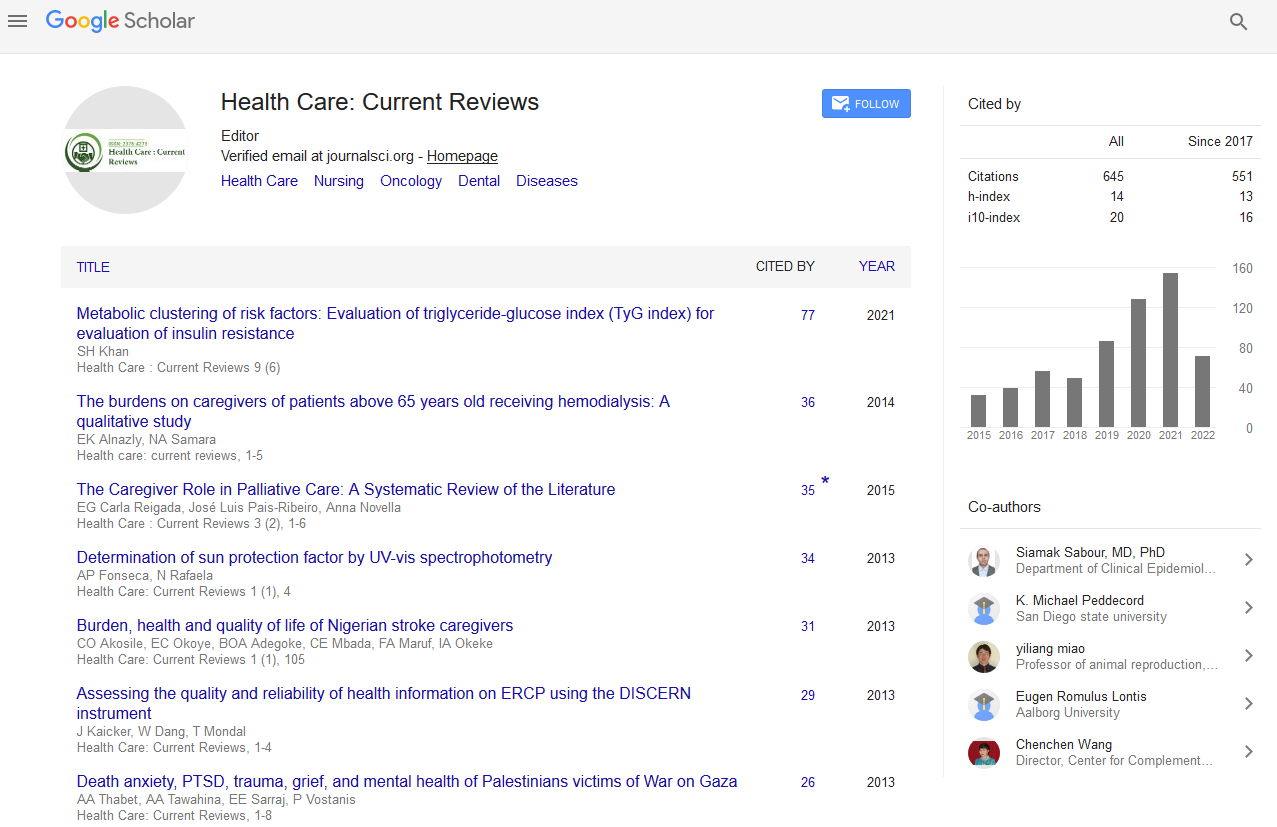PMC/PubMed Indexed Articles
Indexed In
- Open J Gate
- Academic Keys
- RefSeek
- Hamdard University
- EBSCO A-Z
- Publons
- Geneva Foundation for Medical Education and Research
- Google Scholar
Useful Links
Share This Page
Journal Flyer

Open Access Journals
- Agri and Aquaculture
- Biochemistry
- Bioinformatics & Systems Biology
- Business & Management
- Chemistry
- Clinical Sciences
- Engineering
- Food & Nutrition
- General Science
- Genetics & Molecular Biology
- Immunology & Microbiology
- Medical Sciences
- Neuroscience & Psychology
- Nursing & Health Care
- Pharmaceutical Sciences
Screening and diagnosis of breast cancer in low-resource countries: Where we are and what we should do?
3rd Indo-Global Summit & Expo on Healthcare
October 05-07, 2015 New Delhi, India
Sidharth Sahni
Indraprastha Apollo Hospital, India
Keynote: Health Care: Current Reviews
Abstract:
Healthcare providers in developing countries regularly see women with advanced, incurable cancers. Health of a rural Indian women and her access to health facility is compromised due to sociocultural, economical and environmental factors. Efforts aimed at early detection can reduce the stage at diagnosis, potentially improving the odds of survival and cure and enabling simpler and more cost-effective treatment. Early detection of breast cancer entails both early diagnosis in symptomatic women and screening in asymptomatic women. Key prerequisites for early detection are ensuring that women are supported in seeking care and that they have access to appropriate, affordable diagnostic tests and treatment. We therefore propose the following sequential action plan: Promote the empowerment of women to obtain health care, begin early detection efforts through breast cancer education and awareness and when resources permit, expand early detection efforts to include mammographic screening. Public education and awareness can promote earlier diagnosis and these goals can be achieved in simple and cost-effective ways such as dissemination of messages through mass media. All women have the right to education about breast cancer but it must be culturally appropriate and targeted and tailored to the specific population. When resources become available for screening, they should be invested in screening mammography, as it is the only modality that has thus far been shown to reduce breast cancer mortality. Clinical breast examination (CBE) and breast self-examination (BSE) are important components of routine breast care in countries with access to mammography and are important for general breast health education in all countries. However, the evidence does not support the use of CBE and BSE as life saving screening methods at this time, recognizing that data from countries with very limited resource are lacking. When widespread screening is not possible, screening can begin in an institution, city or region or by targeting screening to women at highest risk. A pilot program can be an ideal way to define the best approach to screening. To succeed, early detection efforts must include the health care providers with whom women have contact; these providers may be physicians, nurses, midwives, traditional healers or others.
Biography :
Sidharth Sahni’s specialization lies in breast surgery, having worked at one of the leading breast centres in the world - the Edinburgh Breast Unit. Under the guidance of Mr. U Chetty and Mr. JM Dixon, he underwent specialist training in breast and axillary conservation as well as benign breast disease management, focusing on minimally invasive management of infective and inflammatory conditions. He then moved on to the European Institute of Oncology (IEO) in Milan, training with Prof. Umberto Veronesi and Prof. Alberto Luini from the year 2005-2006 in order to obtain his certification in specialist training in breast surgery.
Email: drsidsahni@gmail.com


